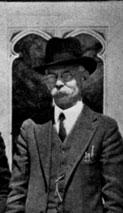- The College of Arts and Sciences opened as part of a reorganization of the University of Florida. Prior to 1910, classes in the arts and sciences were taught in the School of Language and Literature and the General Scientific School. According to the University Record of May 1910, the University had been “reorganized with a view to bringing its organization and nomenclature into harmony with that of other institutions engaged in similar work and in order to attain a better coordination among its various lines of activity.” The new college had a staff of twelve and offered degrees in fourteen disciplines: Ancient Languages, Botany, Chemistry, Education, Secondary Education, English, Geology, History and Economics, Mathematics and Astronomy, Military Science and Tactics, Modern Languages, Philosophy, Physics, and Zoology and Bacteriology.
- Over the years, the college underwent constant change. Some of the original departments were transferred to new colleges; the education classes moved to the College of Education in 1913, Economics joined the College of Commerce and Journalism in 1920, and the military sciences became a separate division. A few departments — Botany, Chemistry, and Physics — left the college for short periods and returned. Courses in the fine arts were added, although these eventually became part of the College of Fine Arts. New departments were created; some of the early ones were Religion (1911), Geology and Biology (1913), Sociology and Political Science (1914), Speech (1917), and Psychology (1930).
- James Nesbitt Anderson was named the first dean of the College of Arts and Sciences. Born in 1864 in Laurens County, South Carolina, he went on to earn a BA and MA from the University of Virginia. He studied at Harvard University as a Morgan Fellow and later received a PhD from Johns Hopkins University. As a Greek and Latin professor at Vanderbilt University, he taught UF President John J. Tigert. Anderson came to UF in 1906 as professor and chair of the ancient languages department. In 1910 he became dean of the College of Arts and Sciences and in 1930 he was named dean of the Graduate School. He retired from the university in the summer of 1938 and died in June 1945.
